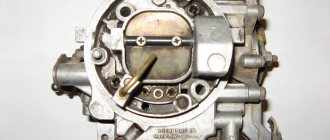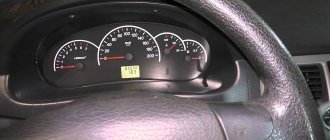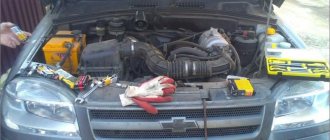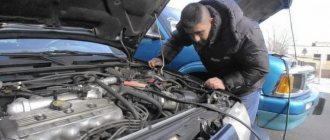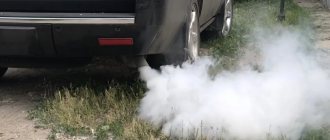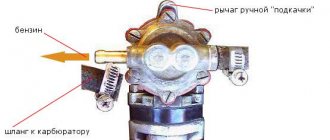Are you looking for why a cold or hot diesel car has trouble starting in winter or summer? Why doesn't the diesel engine start in the morning and why does it smoke white, blue or black? In this article, you will learn why a diesel engine has trouble starting or starting when hot or cold and why white, blue or black smoke comes out of the exhaust pipe.
Almost all owners of diesel cars are faced with the problem of the inability to start the engine in winter, or the engine does not start well - it often stalls. What are the reasons and what to do to make the car run smoothly?
Reasons why a diesel engine does not start or starts poorly?
In cold weather it is difficult to start the engine. This is especially true for diesel engines.
There are many reasons why an engine starts poorly or does not start at all:
- Low compression in cylinders
- Fuel lines and fuel in them are frozen
- The engine oil has thickened.
- Low battery, faulty starter
- Wrong glow plugs
- Air pressure in the fuel system is too low
- Water in the filter
- If the engine is not young enough, severe burns may result.
Low compression in cylinders
If the engine is no longer young, starting in cold weather may be difficult due to the low compression ratio in the cylinders.
The problem with a worn out, old engine will appear after a long period of inactivity and it will be difficult to start a warm engine. After starting, such an engine will show incorrect speed, moreover. In neutral, a diesel engine can vibrate and even limp.
The reason for such inefficient engine operation lies in poorly worn parts of the cylinder head: gaps form between them, the tightness of the cylinders decreases, and compression decreases. As a result, the fuel-air mixture is not compressed enough and heats up.
And after the diesel engine warms up to operating temperature, the gaps between the cylinder head elements decrease under the influence of heat, the tightness increases and the engine begins to operate more stably.
Fuel is frozen
This is the most common and common reason why we do not start the car in winter. After a night in the cold, diesel fuel thickens to the consistency of a gel, especially if the car owner has not switched to winter diesel or did not use antifreeze additives.
When wax crystals form in diesel fuel, they clog the fuel filter. Therefore, it is very important that all diesel car owners replace the fuel filter annually before winter.
To avoid trouble, use the right fuel additives, and it's best to fill up with good quality fuel before the cold weather sets in.
In advanced cases, you will have to flush and often repair the diesel fuel system.
Another reason why the fuel is not being pumped is that water has entered the fuel and has frozen in the filter.
Depending on the version, the fuel filter does not require maintenance (i.e. it needs to be changed every 30,000 km) or has a water drain. The amount of water that accumulates in the filter depends on the quality of the fuel, ambient temperature, number of engine starting cycles, etc. If you don't empty the fuel filter from time to time, extreme cold can cause ice blockage to form. to completely shut off the diesel fuel supply to the engine. Worth checking: If your car's filter has a drain plug, it's a good idea to use it from time to time. Also, don't hesitate to replace the fuel filter.
To prevent this from happening, keep your fuel tank as full as possible in winter, use winter diesel, or add a drying additive. In addition, many diesel engines have a special drain plug near the fuel filter that should be used to drain water that accumulates from time to time. It's worth finding out if there is such an element under the hood.
If the oil in the diesel engine crankcase is too thick or its viscosity coefficient is not suitable for winter use, the engine will not start.
Therefore, it is worth taking out the dipstick and checking the condition of the oil and its consistency. If it is sticky and does not leak, change the engine oil.
The battery is discharged, the starter is stuck
The battery can withstand extreme loads in winter.
If it is old or has a very low charge level, the crankshaft will not rotate enough to create pressure and the glow plugs will not heat up to heat the fuel properly.
In winter, it is more difficult for the starter to unscrew the crankshaft because engine oil thickens in the cold. When worn, it can jam - it starts, clicks, but the engine does not start.
They heat the air in the combustion chambers so that when compressed by the movement of the piston, its temperature rises to a level at which the mixture ignites. In older engines, activation is two-stage: first turn on the ignition key, at the same time turn on the glow plugs and wait until the “heating” light goes out - this takes 20-30 seconds.
In newer installations, the air in the combustion chambers is preheated much faster and the engine is ready to start almost immediately. In this case, the glow plugs usually last a long time. When they fail, even if the engine can be started (it can), after starting it shakes, makes noise for several minutes, and when we try to start it, it turns out that there is no electricity.
Glow plugs break either individually or in groups - the number of “dead” plugs depends on whether the engine can be started at all. For most models, purchasing glow plugs is not a big expense; it is worse to replace them.
Damage to glow plugs is not easy to detect: even with 1 or 2 faulty spark plugs, you can start the engine, even if it is -5 outside.
Low-quality glow plugs do not last more than one season, so you should not skimp on the quality of glow plugs.
Check the glow plugs by unscrewing them and measuring the resistance. A delayed engine start will alert the owner to a problem with the glow plugs.
The absence of a characteristic sound (soft click) when turning the ignition key before starting the diesel engine is a sign of a malfunction of the relay or controller.
Keep in mind that in cold weather, even fast-heating glow plugs can take a few seconds to fire - don't engage the starter too quickly!
Air and fuel enter the cylinders of a diesel engine separately. If air becomes blocked in the fuel system, the engine will stall.
Air enters the fuel system through leaks. To remove the plug, the fuel injector and lines are bled.
Diesel injectors become clogged over time with fuel deposits, rust particles, etc.
Worn out and dirty injectors do not work properly and do not pump or distribute fuel into the combustion chamber. As a result, the diesel engine becomes unstable, may choke and lose power.
If your diesel engine starts well when cold, but refuses to start when warm once warmed up and at operating temperature, the problem is a pair of high pressure fuel pump pistons. The solution is to repair or replace the fuel injection system.
The color of the exhaust gases will also help identify the reason why a diesel engine has difficulty starting in cold weather and is unstable.
The exhaust from a working car is almost colorless. But what if the color came out?
Diesel engine smokes white
White clouds do not always mean that there is something wrong with the car. If they stop appearing after a while, there is nothing to worry about. White smoke is often just water vapor accumulated in the exhaust system, for example. This is more noticeable at low temperatures.
However, white and dense exhaust gases leaving the system despite long distances are a bad sign. The head gasket or the head itself may be damaged. White smoke comes out as coolant enters the cylinders. We may feel engine vibration or loss of power and notice loss of coolant.
Diesel engine light blue
The blue color of the exhaust gases indicates that the engine is burning oil entering the chambers. There may be serious shortcomings here. Piston rings or cylinder liners may be damaged.
Blue smoke can also be a sign of worn valve seals or a broken turbocharger.
Diesel engine burns black
Black plumes of smoke are common in diesel engines. This can happen when the engine is starting or when the engine is under load.
If the black exhaust is visible even when driving slowly, and not when the accelerator pedal is pressed sharply, it means that the injection system is faulty. It may be necessary to replace the fuel pump or the injectors themselves. There is also a possibility of damage to the exhaust gas cleaning system. Black smoke could be a sign of a damaged turbocharger or leaking rubber intercooler ducts.
Black gas is less common in gasoline engines. In their case, a dark color may indicate problems with the drive control system, for example, as a result of a less than professional setup of the chip. Too much fuel is consumed.
Oil too thick
As you know, diesel engines use a different lubricant than gasoline engines. However, this does not insure the car against difficult starts, especially in winter. As the temperature drops, the engine oil begins to thicken. Even with a charged battery, it will be difficult for the starter to turn the flywheel, and with it the crankshaft. Typically, diesel engines use motor oil with a viscosity of 15W-40.
When operating in extreme conditions, experts recommend lowering the bar to 5W-30. Thinner oil helps the crankshaft rotate more easily, which is especially important for an engine with lower temperatures.
Fuel
The less often we refuel the car, the wiser it is to refuel with premium diesel fuel in winter. From regular diesel fuel, paraffin has the right to precipitate at a temperature of -20ºC - even if today it is only -5ºC, in two weeks it could be -25ºC - and then we simply won’t start the engine! Although fuel sellers have to adjust the quality of even basic diesel fuel to prevailing weather conditions, firstly, not all of them work quickly enough, and secondly, the fuel sometimes remains in the tank for several weeks. Investments in quality fuel will pay off.
Diesel engine emits gray smoke
Results
Strong-smelling gray exhaust gas may indicate that the engine's air-fuel mixture is too rich. The fuel level may be too high, for example due to a faulty temperature sensor.
- There are many reasons why a diesel engine does not start in cold weather.
- To successfully combat diesel in winter, you need to prepare for the onset of cold weather:
- charge the battery (replace with a new one), make sure that the generator is in good technical condition
- replacing engine oil and filter
- check the serviceability of the glow plugs
- replace fuel filter
- changing fuel to winter
- drive with a full tank of gas
In most cases, if these measures are followed, problems with starting a diesel engine at low temperatures will not arise.
The article describes the reasons why a diesel car (diesel engine) does not start for the following brands of cars:
However, if the engine does not start cold, try adding warm fuel to the tank or warming up the diesel engine by pointing a construction (household) dryer to the fuel filter and gas tank. After 10-15 minutes, only warm fuel will flow back into the tank, and only then you can hit the road.
If the problem is a discharged battery, try to “ignite” the engine, or better yet, remove, heat and charge the battery.
Water in the fuel system of a diesel engine
After starting the engine, the diesel fuel unused by the sprayers enters the vehicle tank. As the liquid passes through the system, it warms up. During the cold season, due to temperature differences, condensation forms on the internal surfaces of the tank. The water sinks to the bottom of the container, where the liquid intake pipe is located. The presence of water in the fuel makes the engine difficult to start when cold.
The surfaces of the moving components of the pump are lubricated with diesel fuel. The ingress of water leads to increased friction and rapid wear of parts, disrupting the operation of the injection pump.
The motorist must independently monitor the appearance of water and eliminate it in a timely manner. To do this, periodically remove the sump filter drain plug. The water collected in the container will flow out.
Possible causes and solutions to the problem
Imagine this situation. You wake up early in the morning, rush to the garage and get into the car. Turn the key in the ignition and... The car will not start. Probably every car owner has encountered such a situation. The problem with starting the engine is one of the most unpleasant. You really need to go, but the car is standing still. Panic sets in. What to do if the diesel engine does not start? The reasons and ways to eliminate them are further in our article. In gasoline units, a mixture of air and fuel is created, which is injected into the cylinders by an injector. After entering the combustion chamber, the mixture is ignited by the spark plug and the working stroke occurs. Then exhale, compress, and then the cycle repeats. Unlike gasoline engines, in a diesel engine the mixture ignites under high pressure. It enters the combustion chamber through the nozzles. Additionally, the operation includes a glow plug, which heats the fuel to the required temperature.
However, if they fail, the diesel engine will not be able to start properly. The glow plug greatly simplifies the process of igniting the fuel and, therefore, starting the engine. If the diesel engine does not start “cold”, it means that the control relay is faulty and the glow plug is not heating the fuel. This element operates until the coolant temperature reaches operating values. Glow plugs often saved car owners when starting the engine in winter.
Firing angle
Diesel engines also have this parameter. If it does not meet the standard, the motor will work intermittently. Excessive vibrations are noticeable, the diesel engine is bad. The reasons are an incorrectly set ignition timing. Also, this parameter may be “knocked down”. How to set the ignition correctly? This procedure requires certain skills. Setting the advance angle implies adjusting the fuel injection, which is supplied at a specific moment at the end of the compression stroke. When deviating from normal parameters, incomplete combustion of fuel in the cylinders occurs. Because of this, detonation and shaking at idle are possible.
How to set the ignition correctly? The parameter is set by rotating the fuel pump around its axis. The angle is also set by turning the camshaft pulley. To proceed to the adjustment, you need to get to the engine flywheel, after first removing the casing from it. You should find the stopper on the flywheel that drops into the slot and turn the element using a key.
This will set the crankshaft in motion. The flywheel must be rotated clockwise until the locking mechanism engages. Next, we find the injection pump drive shaft. Diesel shouldn't leak on it. Align the marks on the pump flange and on the drive coupling. Next, turn the crankshaft one more revolution and see if the marks match. Then we control the position of the scale. After tightening the drive coupling, lift the stopper on the flywheel. The shaft rotates 90 degrees. The stopper should be placed in the groove.
The final stage involves installing the flywheel housing and tightening the mounting bolts. We start the engine and check its operation. At idle, the engine should not emit unnecessary vibrations, and the movement should be without dips or jerks.
Compression
It should also be remembered that, in addition to the ignition method, these engines differ in the design of the fuel system. And if gasoline ones have a simple submersible pump, then there are two of them: one for low pressure and the other for high pressure. Well, let's look at why diesel is not "hot".
What is normal compression?
Initially, its level is twice as high as that of gasoline units. The mixture ignites as a result of strong compression. And loss of compression does not have the best effect on engine starting. Since each compression process is accompanied by the release of thermal energy, the mixture does not heat up enough and cannot ignite. If it's a high-mileage car, compression decreases as the cylinder walls wear and rings rupture. Recall that each piston has three rings. Two compressions, one with an ice scraper. Here it is necessary to disassemble and repair the engine. It happens that compression drops in only one of the cylinders. In this case, the diesel engine may start and either stall or fail. This means that one of the cylinders is faulty or the ignition is unstable.
Timing belt
Why won't the diesel engine start yet? If the battery is well charged, the starter turns, but does not “grab”, the timing belt may have broken. The system is not able to select the correct phase for each cylinder. Often on 16-valve engines, this failure is accompanied by deformation of the intake and exhaust valves. They bend when the piston hits.
To avoid letting your car get into this state, check the serviceability of the belt. If there are tears or cracks, it must be replaced. Buy original spare parts. The belt is a very important part in a car. According to the regulations, it changes every 70 thousand kilometers. If it is a chain drive, the element may simply stretch or skew one or more teeth. Manufacturers say that the chain in the engine is designed to last the entire life of the engine. But after 200 thousand it stretches - noises are heard during operation. With such symptoms, you need to change it urgently.
Filters
As we said earlier, its design is significantly different from its gasoline counterparts. In 60 percent of cases (including Ford cars), diesel engines do not start due to problems in the fuel system. The first thing that could be clogged is the injectors. This is due to poor quality fuel. You cannot clean them yourself - only in a specialized service.
For what other reasons does a diesel engine not start? Of course these are filters. It is necessary to check their condition.
There are two cleaning stages in the fuel system of a diesel engine - coarse and fine.
The latter requires special attention. The filter paper recess through which fuel enters the injectors is capable of trapping particles as small as 10 microns. The resources of this element are 8-10 thousand. km. If you do not follow this recipe, the filter will simply become clogged. As a result, fuel will not enter the combustion chamber, despite the fact that the pump creates the necessary pressure. This can be determined by the nature of the vehicle's movement. If there are gaps in dynamics, it means that fuel is delivered late. And it is delayed by a filter clogged with dirt. It is also worth mentioning the element of air.
Starter
This problem occurs on both petrol and diesel cars. A relay is also connected to it.
And if the starter does not turn, we listen for clicks, as is the case with the glow plug relay. Perhaps it's an open circuit. Check the battery charge. Of course, it won't be able to drop to such a low level overnight. Even at eight volts it will turn the starter. Slowly, but still. A sharp decrease in level occurs in the event of a short circuit to ground. Perhaps the contact has broken and is shorting out.
Fuel and winter
The system has two mechanisms. This is the injection pump and the injection pump injector. Very often the first element fails because its design is more complex than the second. The pump cannot create pressure in the fuel system, so the diesel engine will not start or is difficult to start. The trip is accompanied by “sneezing” (as if the car is running out of fuel). It is worth paying attention to the fact that the belt goes to the injection pump. It may tear or fall off. First of all, you need to check the belt drive. Check the fuel system fuses (going to the pump). One of them can be blown up. This often occurs due to a short circuit. Experienced drivers are advised to always keep a set of spare fuses in their glove compartment.



